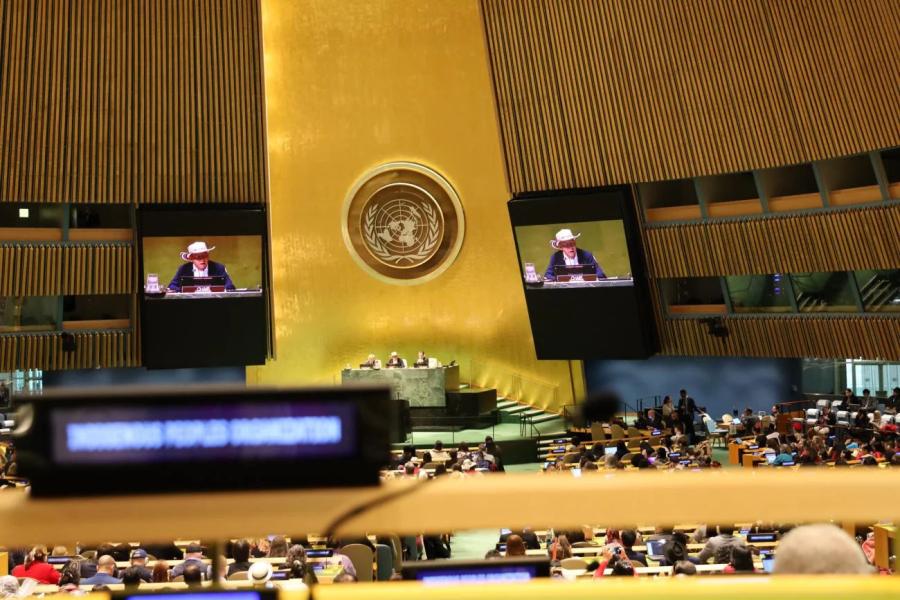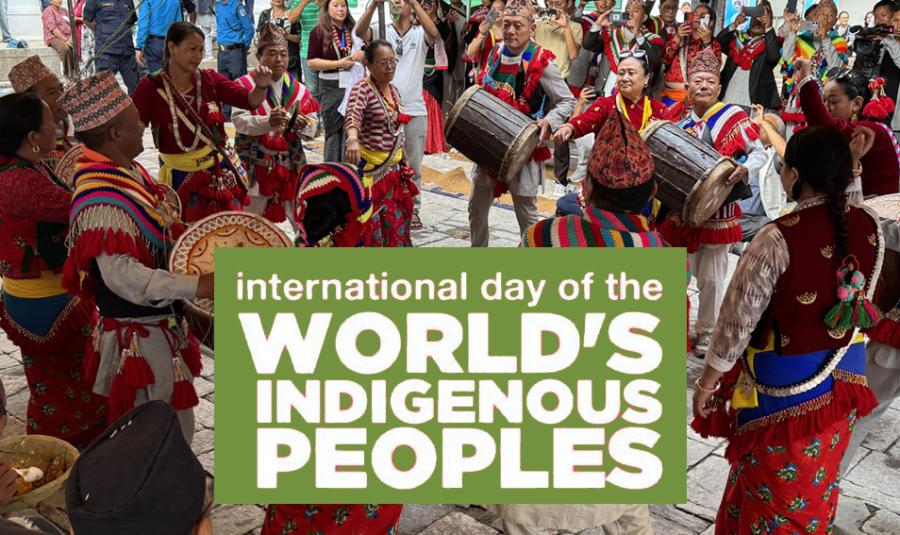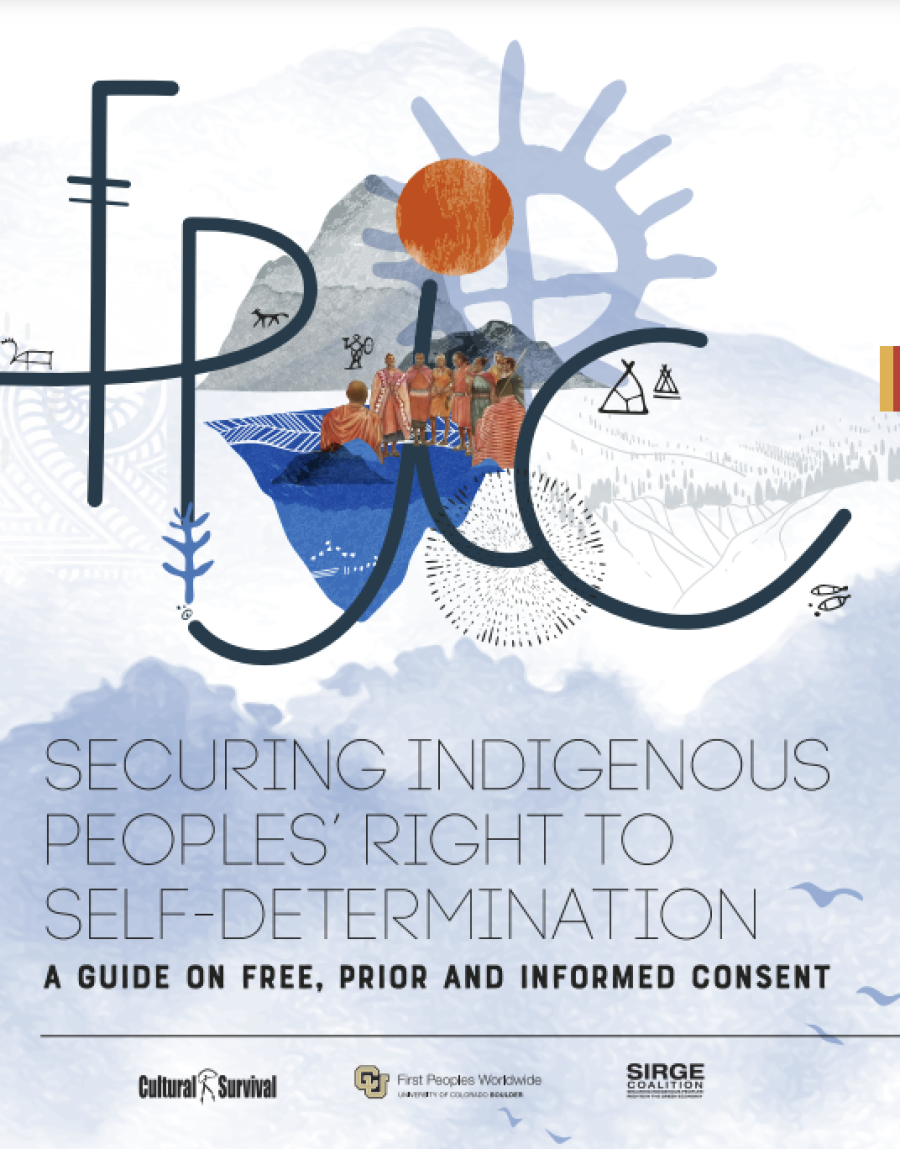As an environmental lawyer engaged in protecting threatened ecosystems throughout North and South America, I have witnessed the destruction of rivers, lakes, seas, and forests, along with the ancient societies that occupy these precious environements.
Last spring I hosted a meeting on the subject at my home in Mount Kisco, New York> At the table sat the Pewenche cacique (headman) Jose Antolin, leader in the fight against the Bio Bio River dams in southern Chile. The proposed dams will drown ancestral Pewenche lands. Across the table sat Grand Chief Mathew Coon Come, who for 10 years has led Northern Quebec's Cree in thier battle toblock a gaint dam project that will inundate an area the size of Lake Erie and alter the ecology of the Cree's homeland, eastern North America's largest wildernes. Together with environmental and humanrights activists from both continents, we spent the afternoon discussing strategies for protecting tribal landsd and the cultural and ecological values they support.
The Pewenche and Cree experiences fit a pattern that I see repeated around the globe. Energy companies, loging and mining interests, and publicly owned untilities, driven by booming populations and accelerating demands for energy and virgin materials, are invading the planet's most remote areas. They build dams that inundate these lands with water or roads that flood them with colonists. Sometimes they leave behind toxic materials that poison both land and water.
In almost every case, human-rights violations precede these these invasions. People already live on these lands - usually aboriginal people who have retreated to wildernesses that were once too remote or inhospitable to support Western commerce or agriculture. As development forces these people to relinquish their culture and economies and their claims to their homelands, efforts to avert environmental destruction merge with the struggle for human rights.
For indigenous cultures, this is most often a struggle for the recognition of group rights - the rights of a particular people to maintian its culture, religion, traditional lands, and collective control of natural resources. Because the assertion of group rights is the most potent barrier to wilderness invasion, group rights are usually the developers' first target. Corporations shun negotiations with organized tribal confederations and instead justify invasions of tribal lands by finding and compensating individuals with a colorable claim to the desired parcels. Often, those individuals have never lived by any notion of property ownership and may be ill prepared to assess the market value of land or the long-term burden its sale would impose upon children, family, or tribe. I have seen U.S. oil companies obtain million-dollar properties in Ecuador in exchange for an outboard motor and the price of a few coffee beans.
Governments - where under economic pressure to mine natural resources or acting in the name of "slum clearance," economic growth, or national security - often encourage such charades to disenfranchise Indians. Thus Ecuador has made it illegal to pay petroleum royalties to tribal confederations. Instead it encourages oil companies to "divide and conquer" by making small settlements with individual "landowners." Elsewhere, homesteading policies and tax subsidies encourage outsiders to take over Indian lands. Some governments promise Indians per capita distribution of royalties, thereby bypassing group decision making. Others blatantly ignore indigenous land claims. Ecuador, like most Latin American countries, officially classifies large tracts of Indian lands as "unoccupied," leaving them open to homesteaders and speculators. Indians who have occupied these lands for hundreds of years lack the resources to hire attorneys and assemble proofs to obtain land titles.
Other policies encourage aboriginals to privatize and sell communal homelands piecemeal. According to Chief Antolin, the principal threat to Pewenche culture is a Chilean initiative to undermine communal control of Pewenche homelands and instead distribute land titles among indivudual Pewenche. This would make it easier for developers to obtain the land through distress sales or by eminent domain. The U.S. government initiated a similar strategy under the notorious 1899 Dawes Act, which allowed speculators to obtian control of millions of acres of Indian land - and the underlying mineral resources.
THE CURRENCY OF POWER
There observations about aboriginal rights are particularly relevant to environmentalists. First, traditional cultures are as valuable to humanity as the environments they steward. Second, efforts to plan the uses of wilderness lands outside of the context of a partnership with their indigenous occupants offened the notion of justice. Third, speaking pragmatically, the world's remaining large tracts of wilderness cannot be saved without the cooperation and help of their indigenous stewards. In other words, to save the globe's remaining wilderness, we must proceed under the banner of human rights, particularly group rights.
These observations suggest that environmentalists must embrace the objective of ensuring the right of indigenous peoples to control their lands, including the right to exclude activities that could destroy their cultures and livelihoods. To obtain and safeguard these rights means committing ourselves to the empowerment of aboriginal groups. And if such a commitment is to go beyond lip service, we must, among other things, help those groups to rebuild or obtain sustainable economic systems for both domestic production and for open market trade if desired.
For aboriginal peoples, the most obvious and reliable way to obtain money is through economic control and sustainable exploitation of the resources on their own lands. Environmentalists should therefore assist wilderness people in their battles to obtain full title to their lands, as well as to the resources above and below those lands.
Environmentalists may find three aspects of this troubling. Yet the recognition of group rights mitigates each of these real concerns.
First, Western culture and money are often toxic to indigenous culture. There are frequent examples, from the Alaskan oil-royalty disbursements to Brazil, where per capita distribution of tribal wealth and land has caused tribal disruption and individual injury. Strong group rights, however, reduce divisive pressures by maintaining the integrity of tribal lands and reinforcing traditional mechanisms for sharing and distributing group resources.
Second, environmentalists worry that the exploitation of ecosystems under group control will be no less destructive than those under individual ownership. This is a possibility; in practice, however, group-controlled ecosystems have fared much better, probably because collective decisions about resource use involve thorough and thoughtful deliberation. Impulsive and poorly informed decisions are less likely, as is the potential for distressed or greedy individuals to alienate traditional group properties. Pine Ridge Reservation Sioux, for example, the poorest people in the United States, have rejected a series of lucrative offers by private companies to construct environmentally questionable facilities on tribal lands. In this and many other cases, the group dynamic tends to emphasize cultural and religious attachments to the land. It should not surprise us that the groups that best protect these lands are the same groups that have been their successful stewards for thousands of years; after all, they have the strongest links to the land they occupy.
Third, some environmentalists question whether indigenous cultures can retain their "special" rights after being "contaminated" by Western money and material goods. Quebec's giant dam-building utility, Hydro Quebec, raised this very question in its defense against a 1978 Cree lawsuit. Hydro Quebec argued that since the Cree used snowmobiles and high-powered rifles, ate hamburgers, and wore down jackets, they could no longer claim to be a distinct culture with special group rights to tribal lands. In response, skillful Cree lawyers called native trapers and storytellers, hunters and fishers, mothers and fathers to testify, in their own language, about their lives, beliefs, and traditions. This extraordinary transcript proved beyond doubt that the Cree retain a rich culture interwoven with their heritage, driven by hunting and fishing, and intricately connected to the land. The Court agreed.
THE NEXT MILLENNIUM
All cultures are dynamic. Human beings have flourished because they can take advantage of new technologies, from the horse to the bow to the wheel. Indigenous peoples are not zoo animals to be frozen against their will in time. The injustice of rejecting this principle is evidenced in the absurd and humiliating fate of the Chachi Indians, who under Ecuadorian law only retain their land rights so long as they retain their traditional mud headdresses so pleasing to tourists. If South American Indians want rubber boots to protect themselves from snakes or Western clothes to shield their skin from insects or inoculations for their children, we have no right to deny them these. Their use of these things should not compromise or affect their legal rights over their traditional homelands. Those rights must be continuously reaffirmed, for the sake of humanity and for the sake of these last widerness areas.
The link between endangered societies and ecosystems underlies State of the Peoples. Emphasizing pluralism and group rights, this long-needed book presents innovative solutions to the challenges confronting wilderness cultures - environmental degradation, ethnic conflict, cultural disintegration, and poverty and economic development. The book's approach to group rights combines respect for individuals with an appreciation of the concerns facing distinct cultures within plural societies.
As you read State of the Peoples, entire societies are disappearing in the face of war, disease, poverty, and unwise and indiscriminate development. Yet their fate and ours are not settled. In the last decade of the twentieth century, control over land and resources is both an urgent necessity for indigenous peoples and the best hope for invaluable rain forests and other endangered ecosystems. Like a canary in a coal mine, the life or death of these peoples may indicate how well we will all fare in the next millennium.
Article copyright Cultural Survival, Inc.



